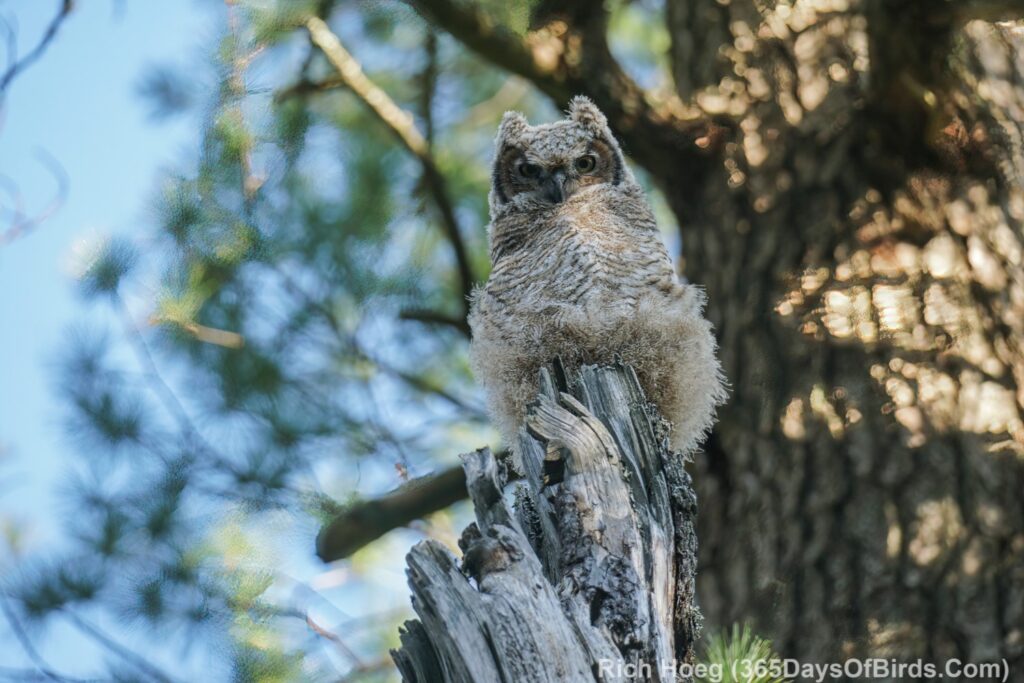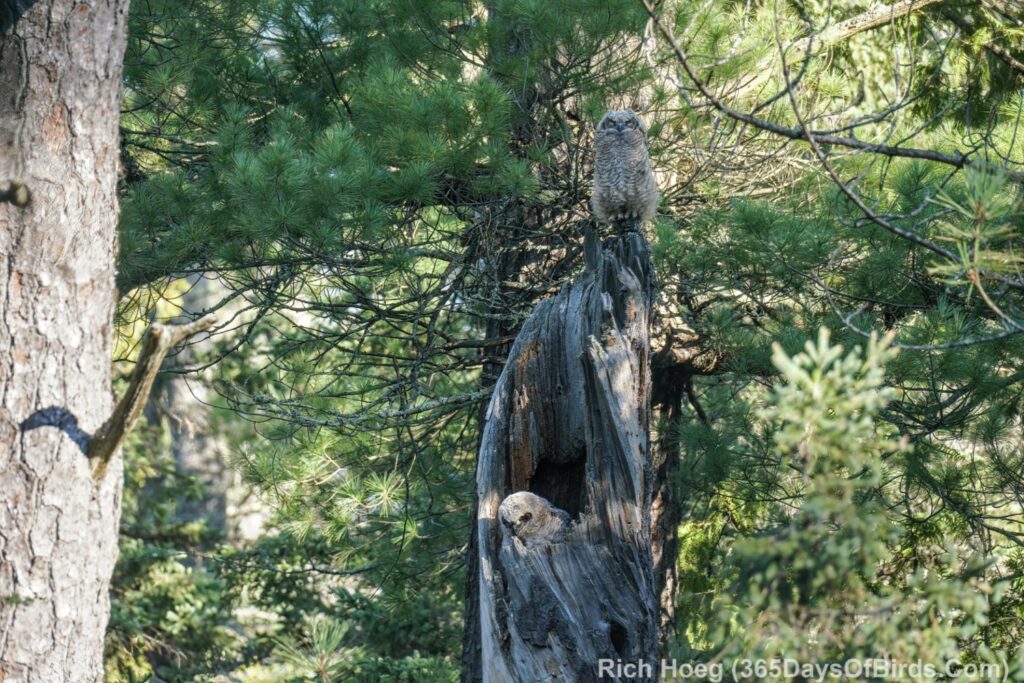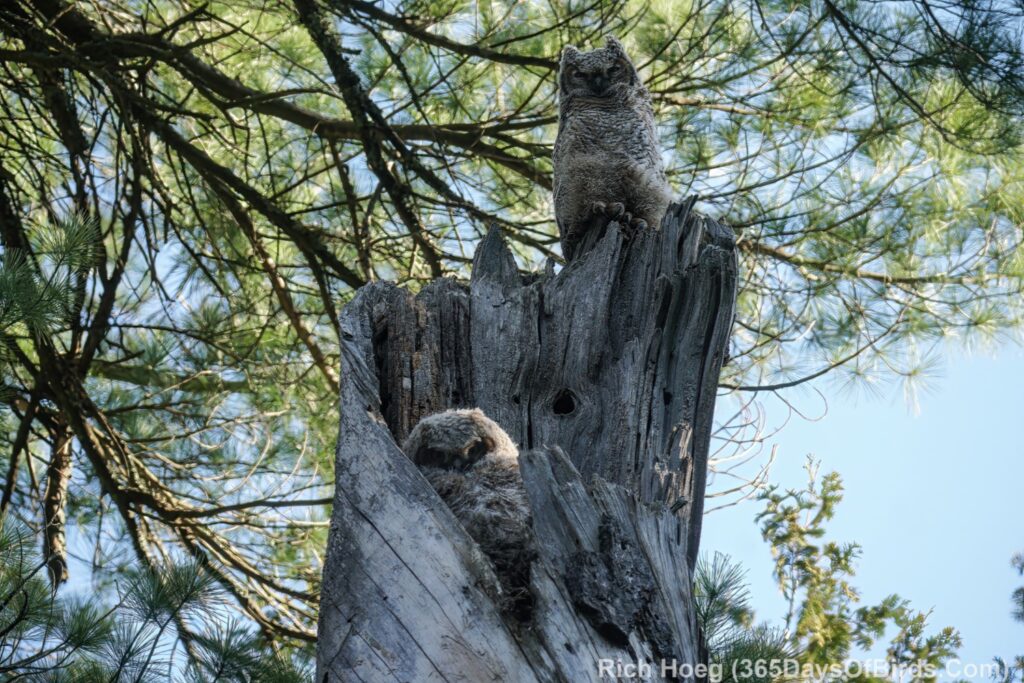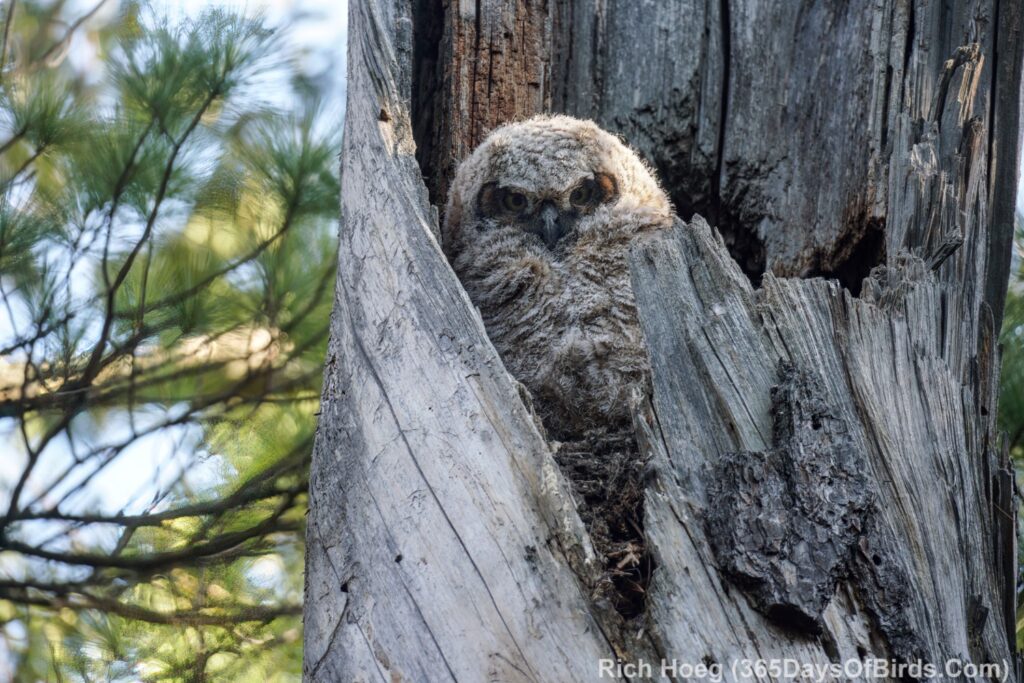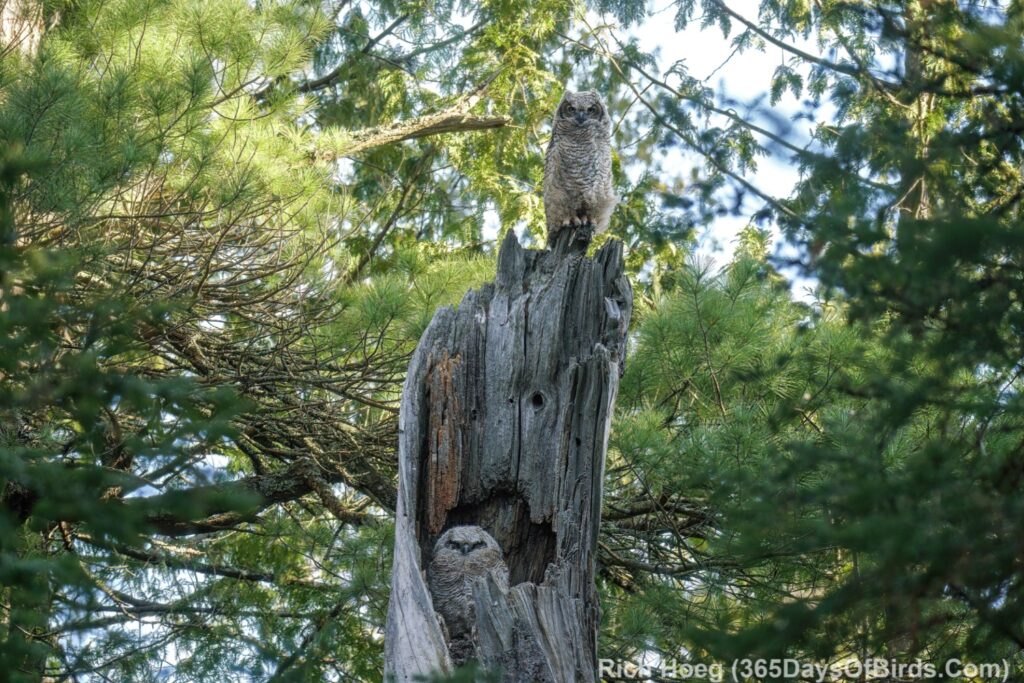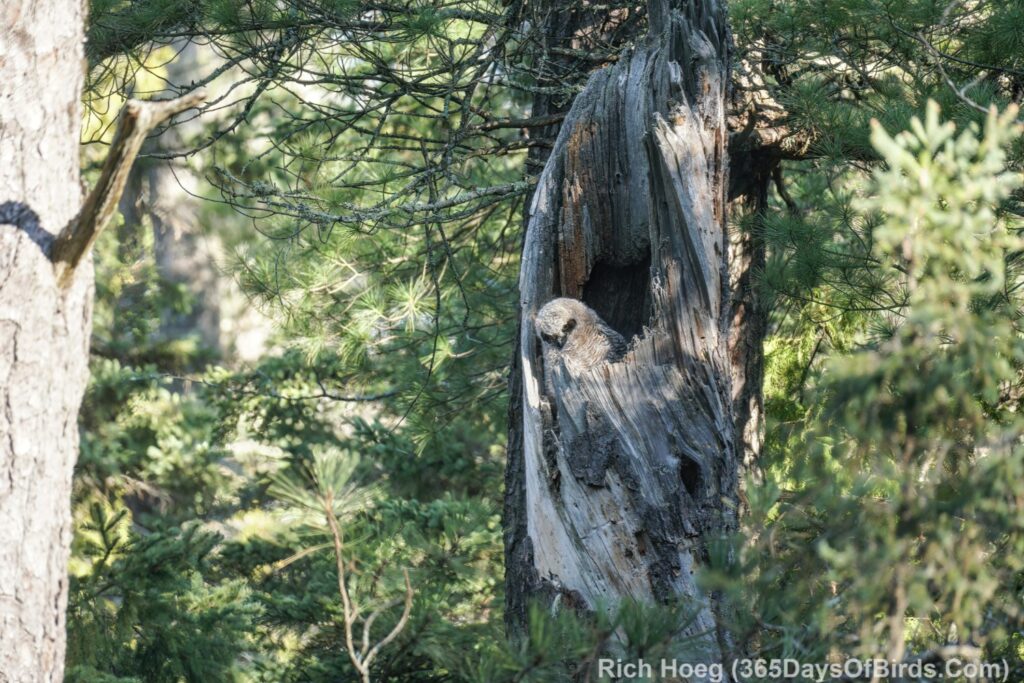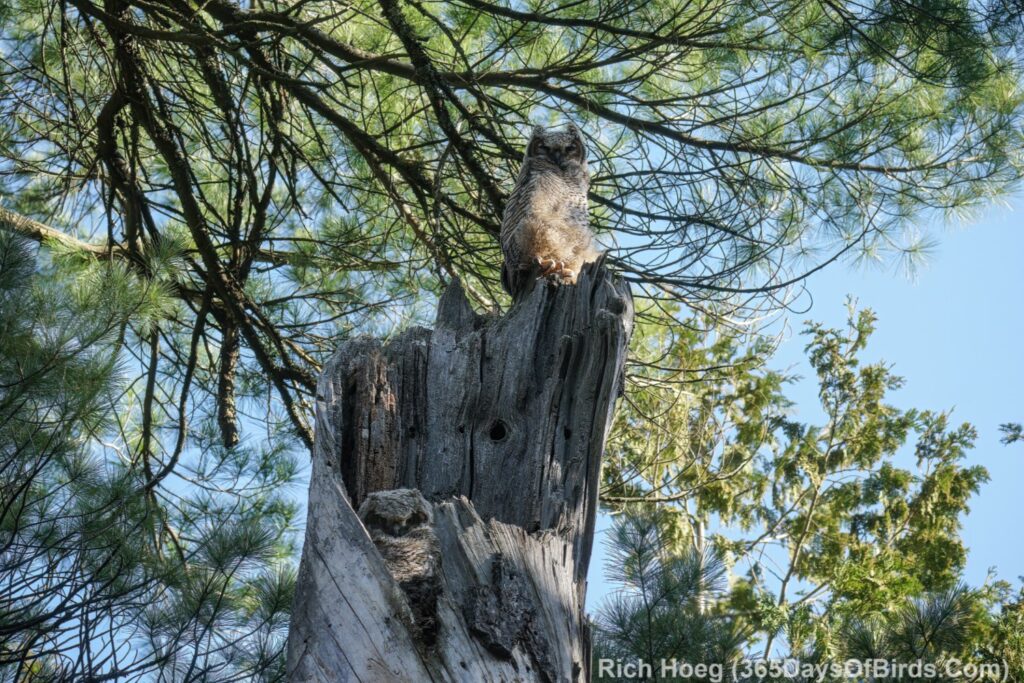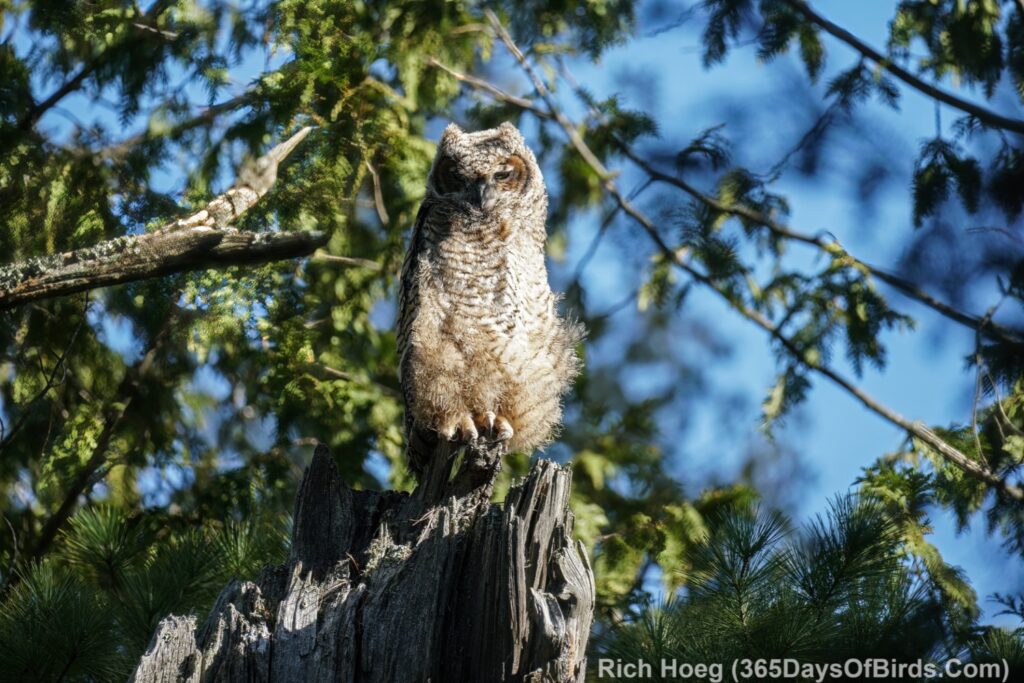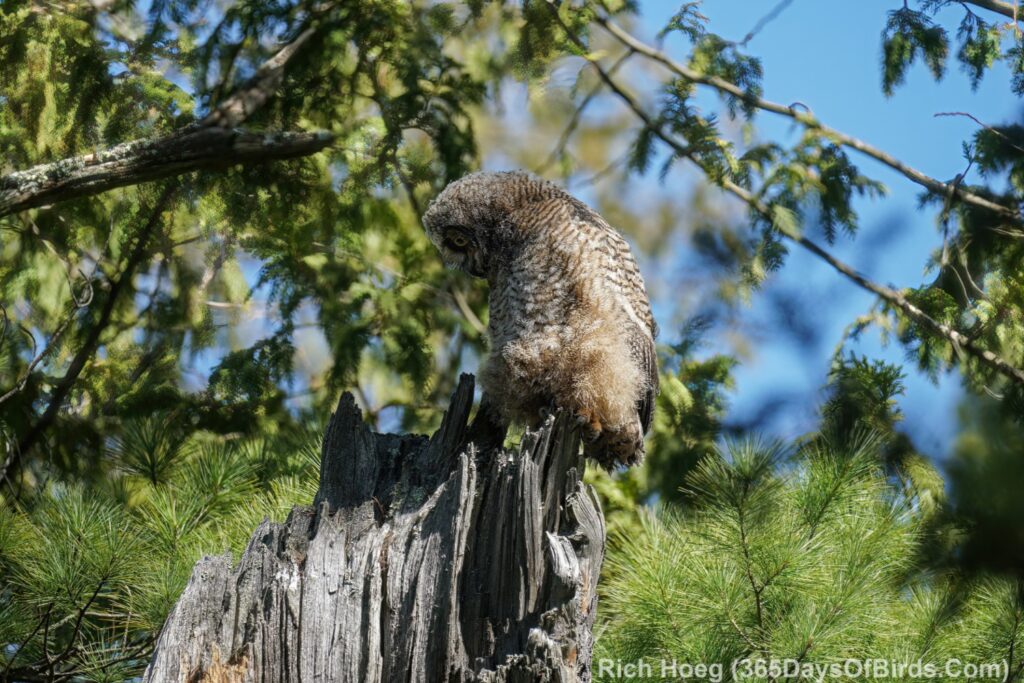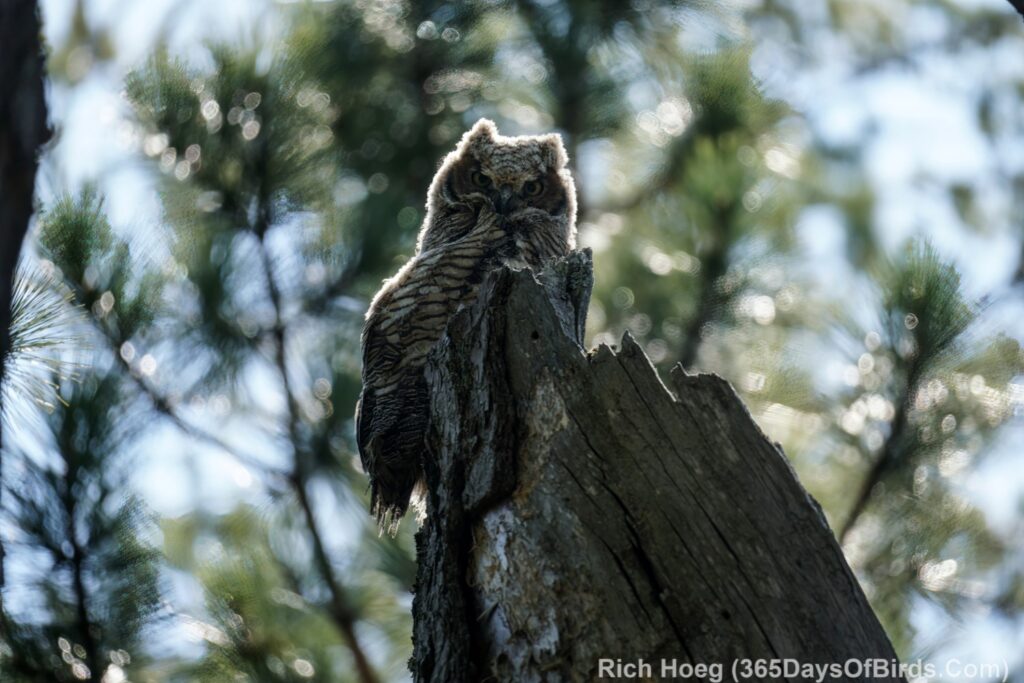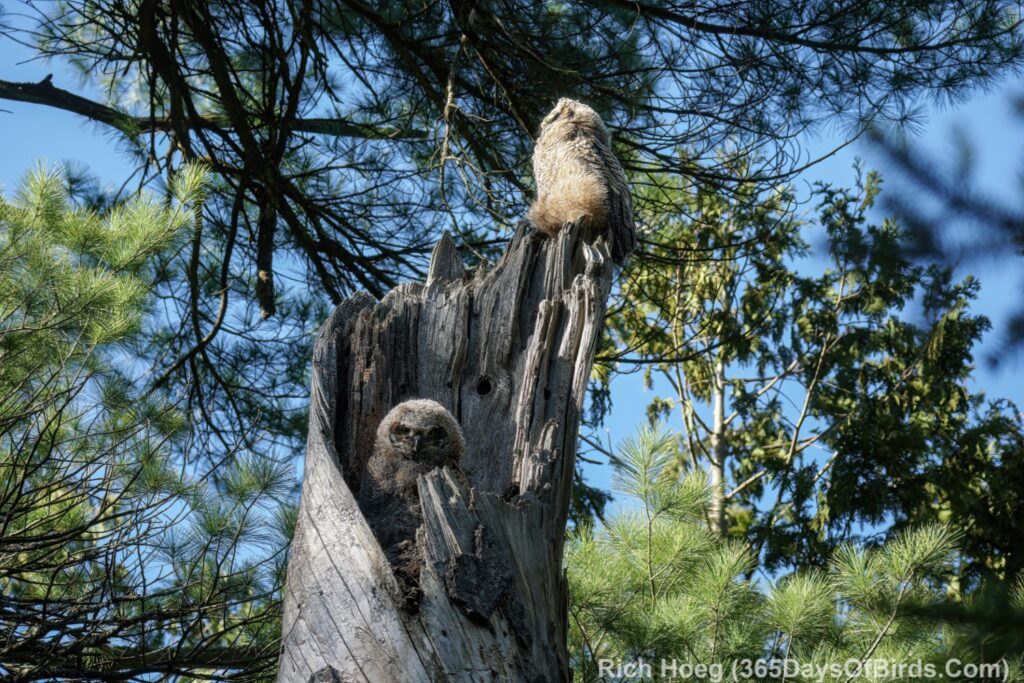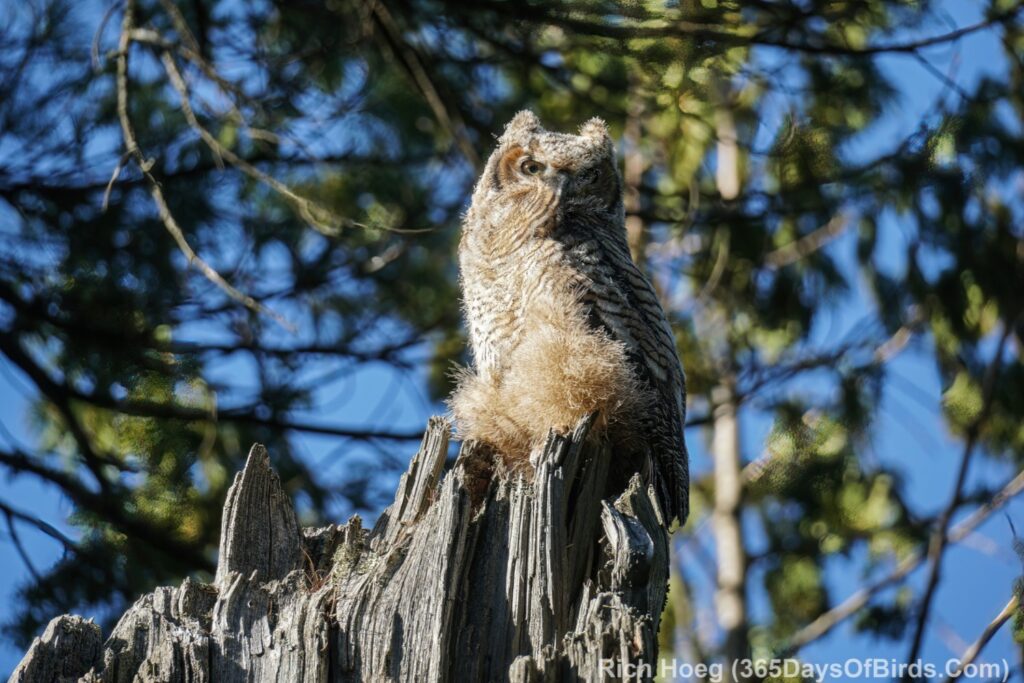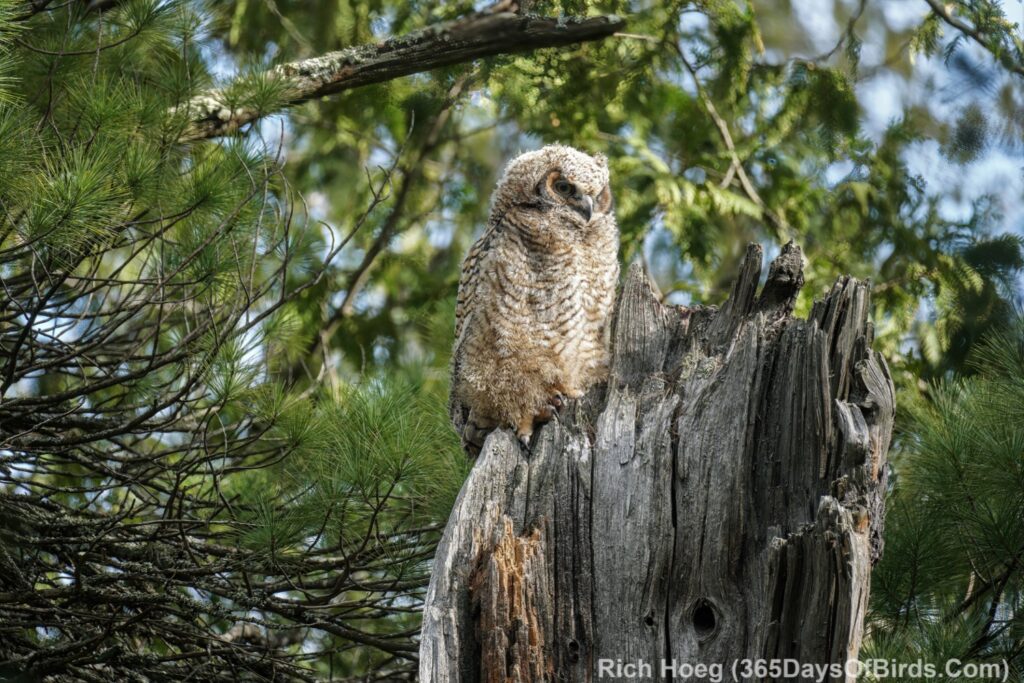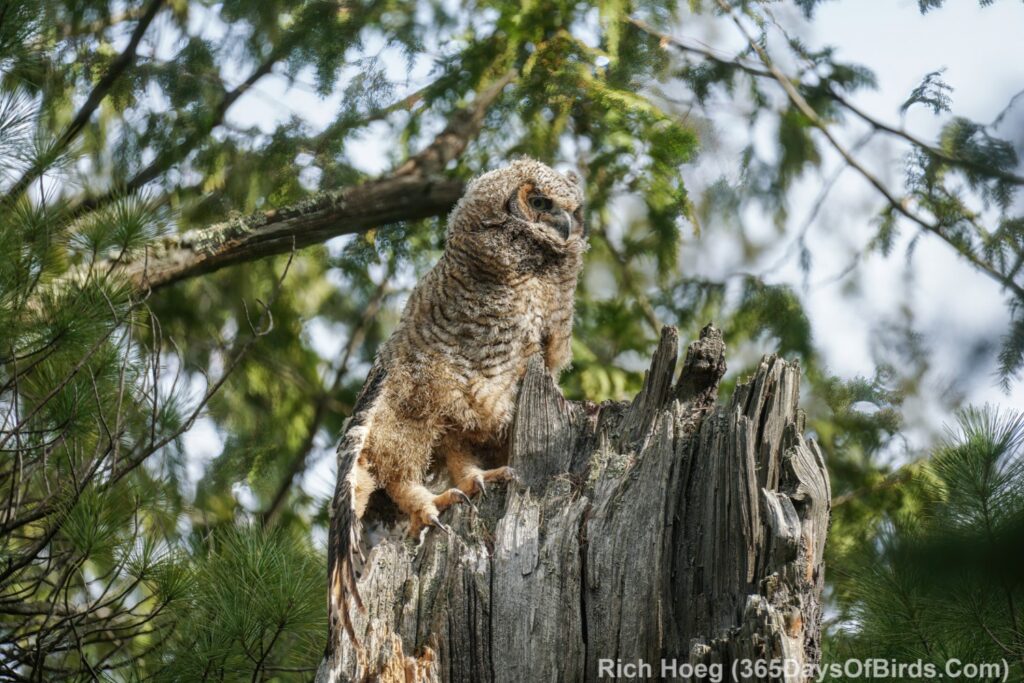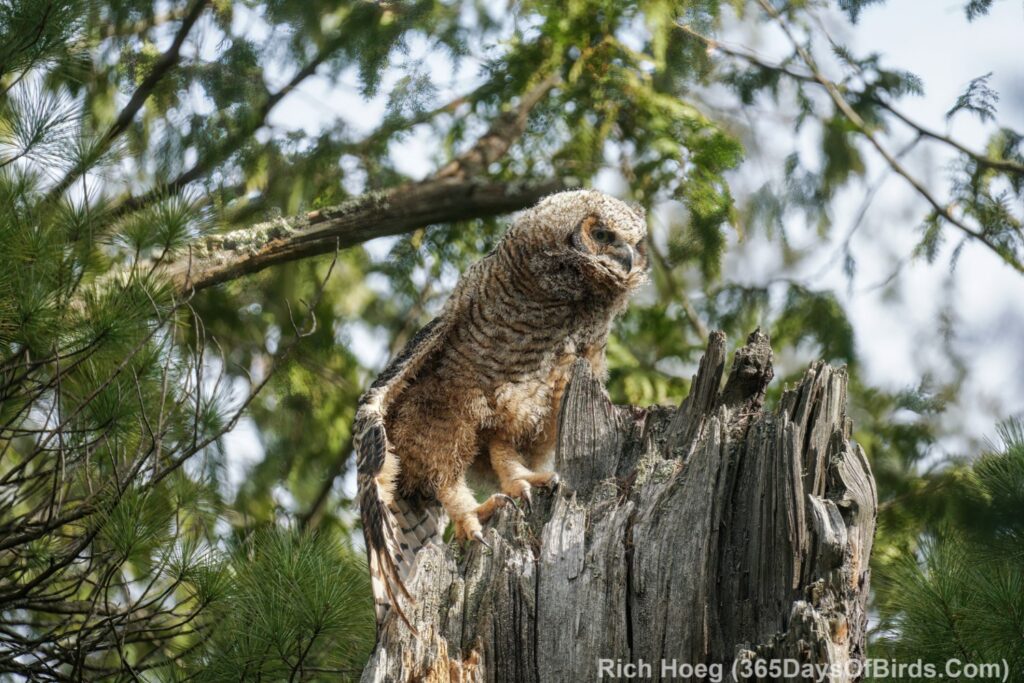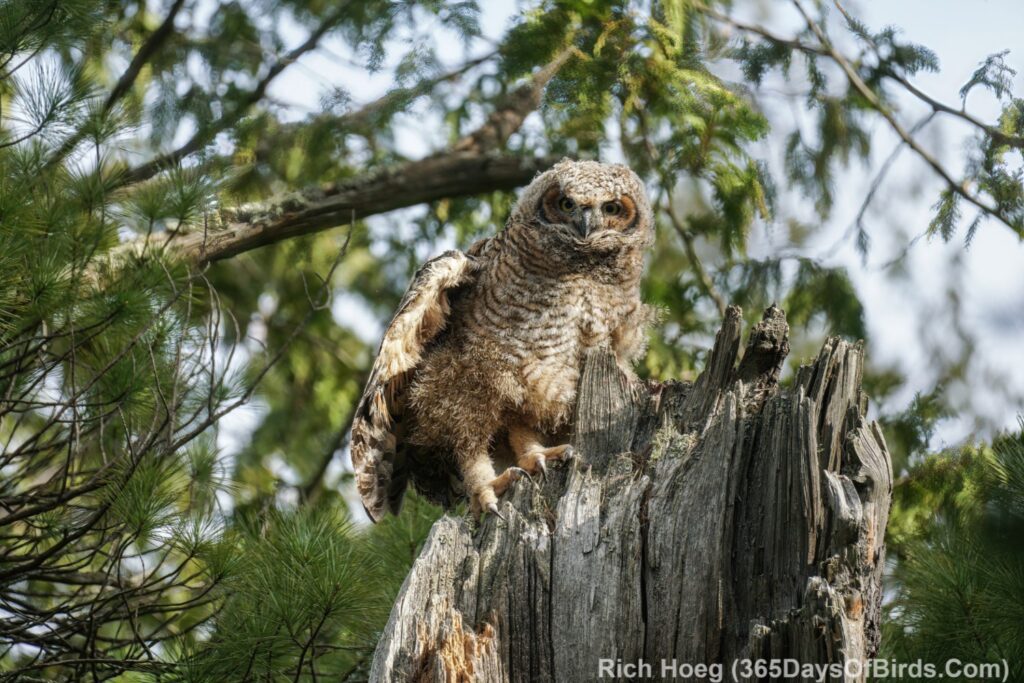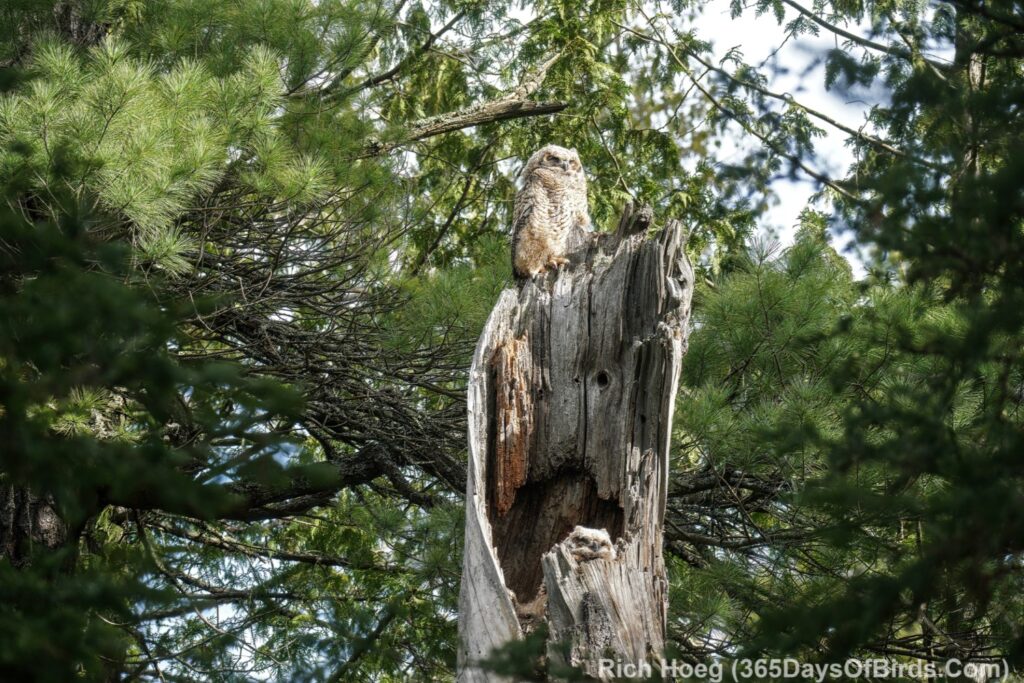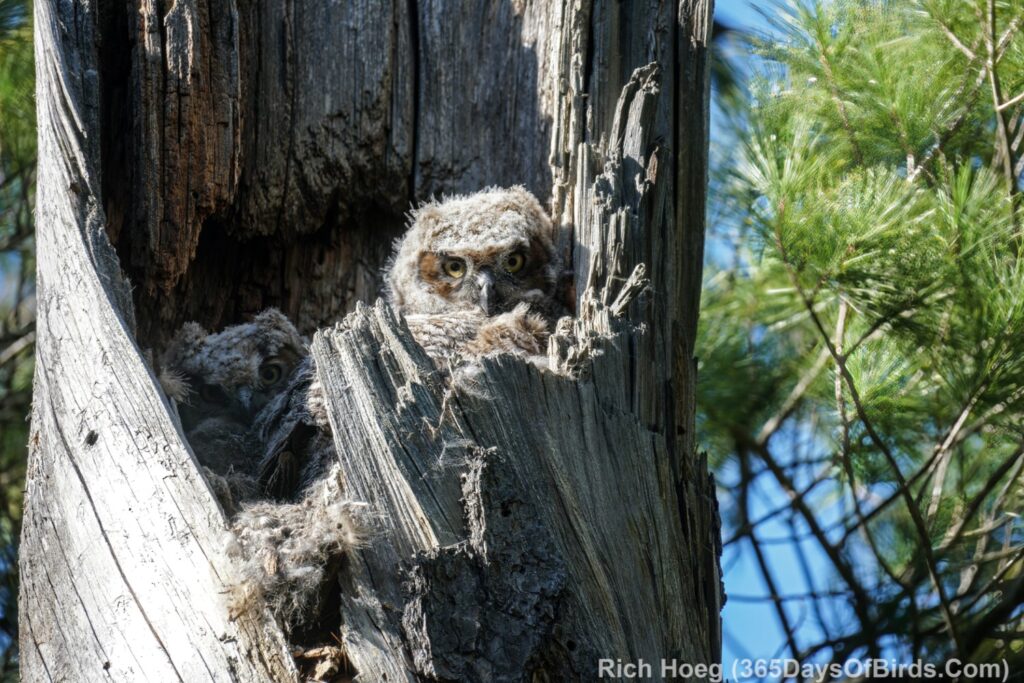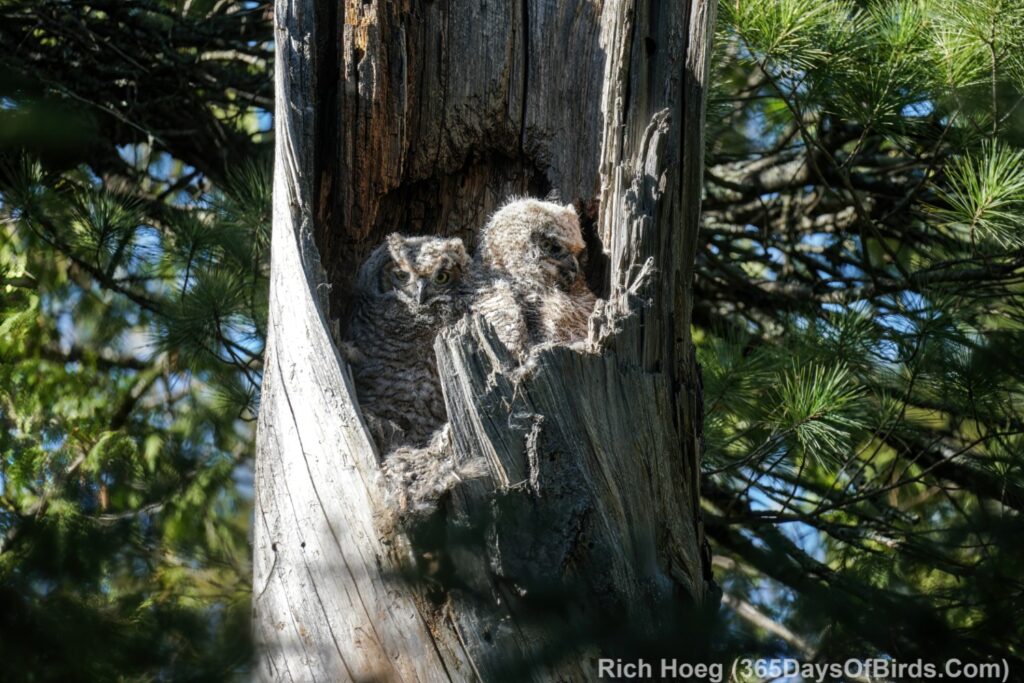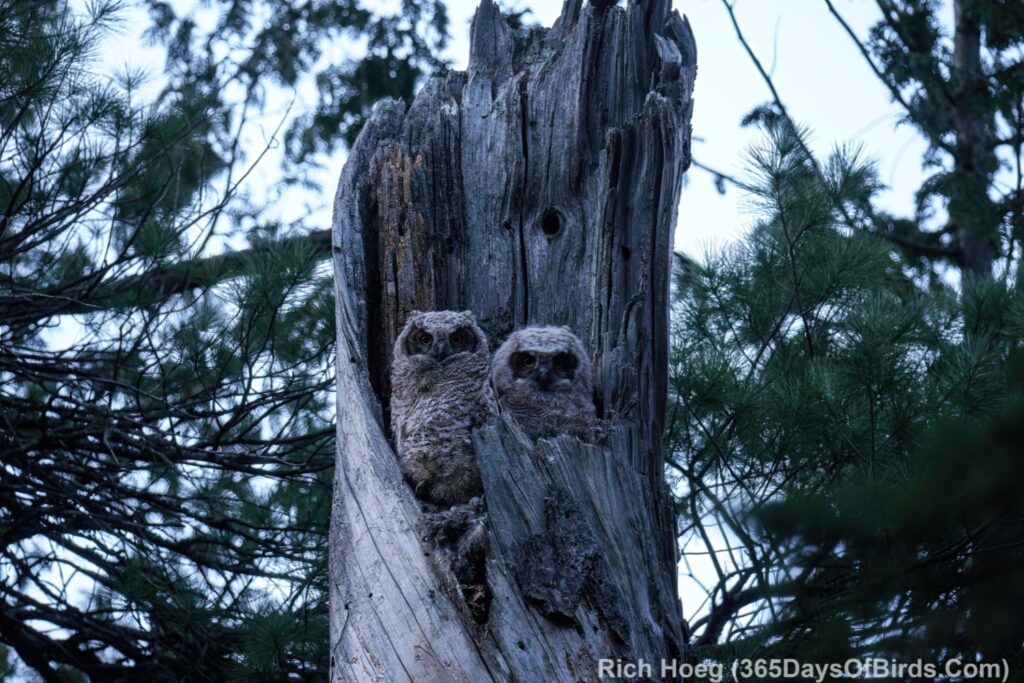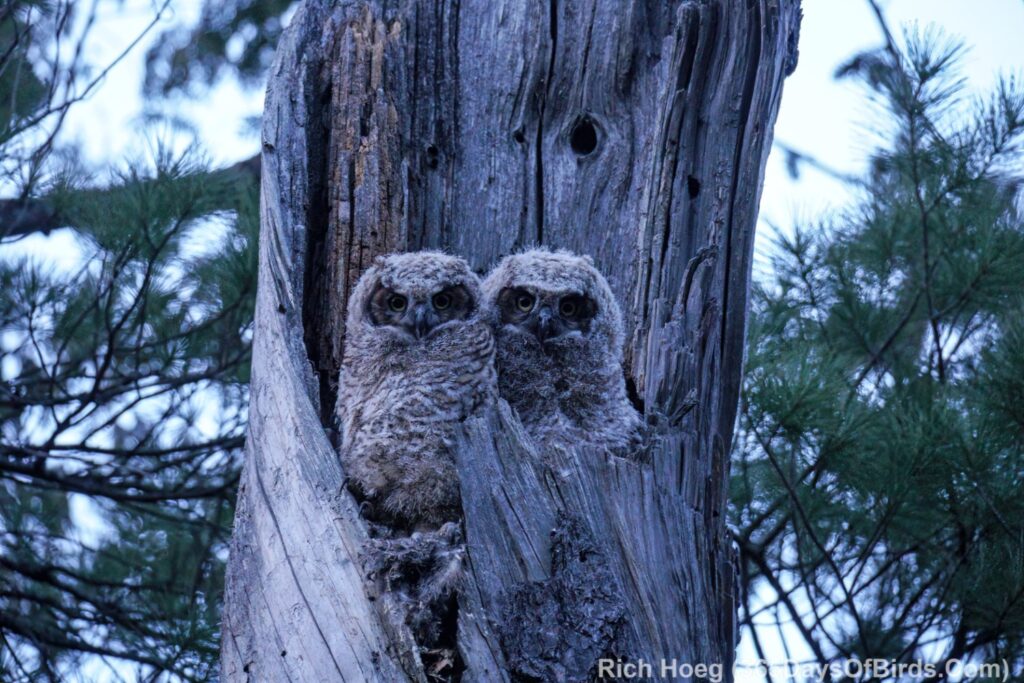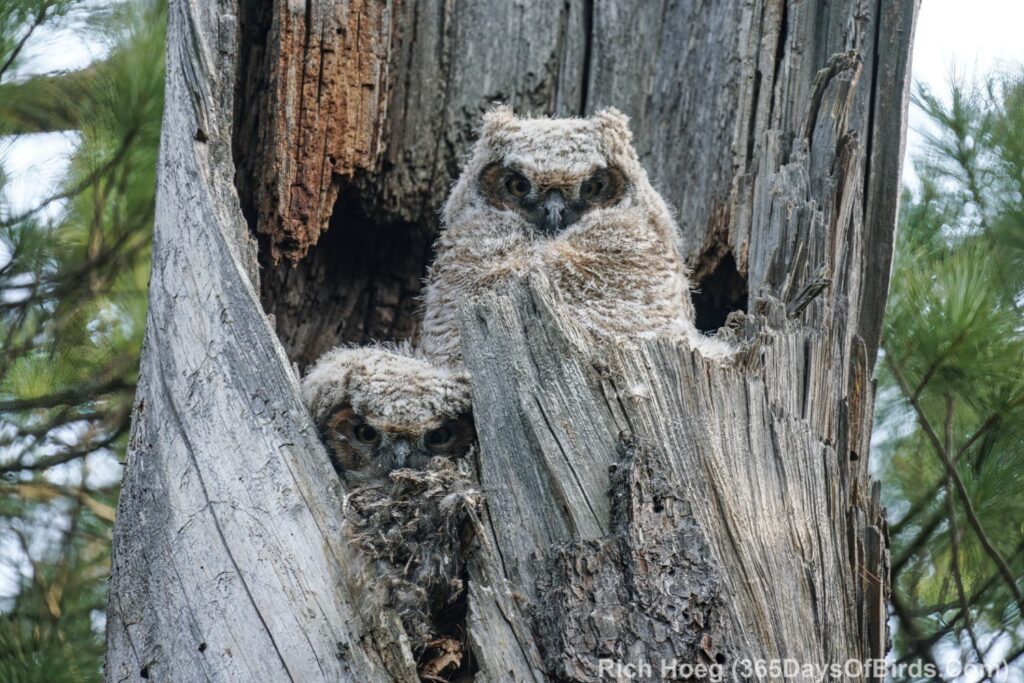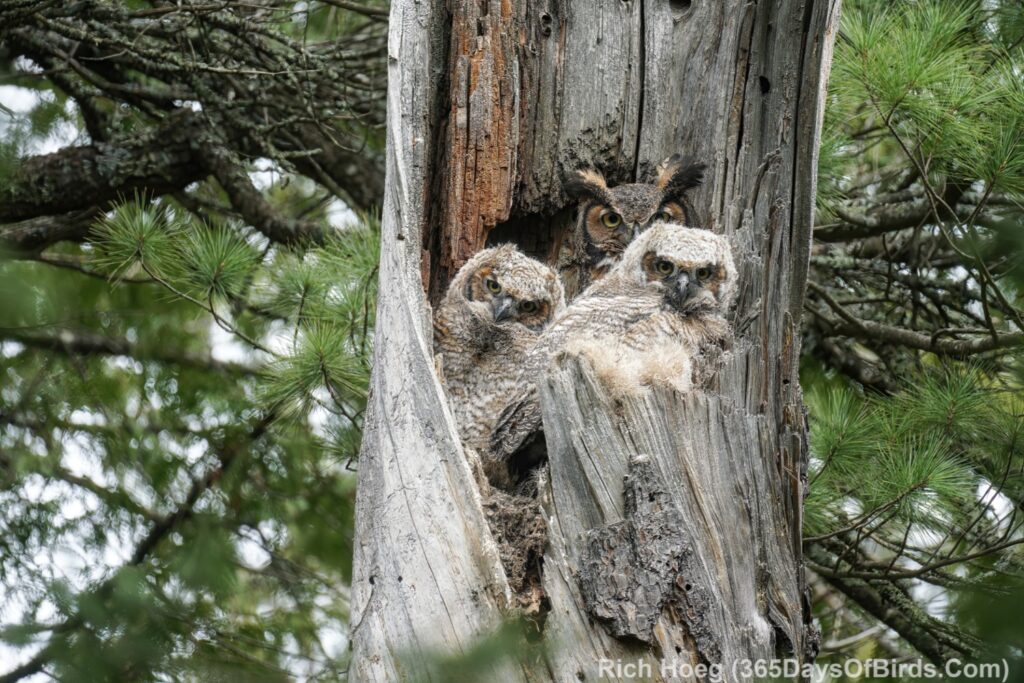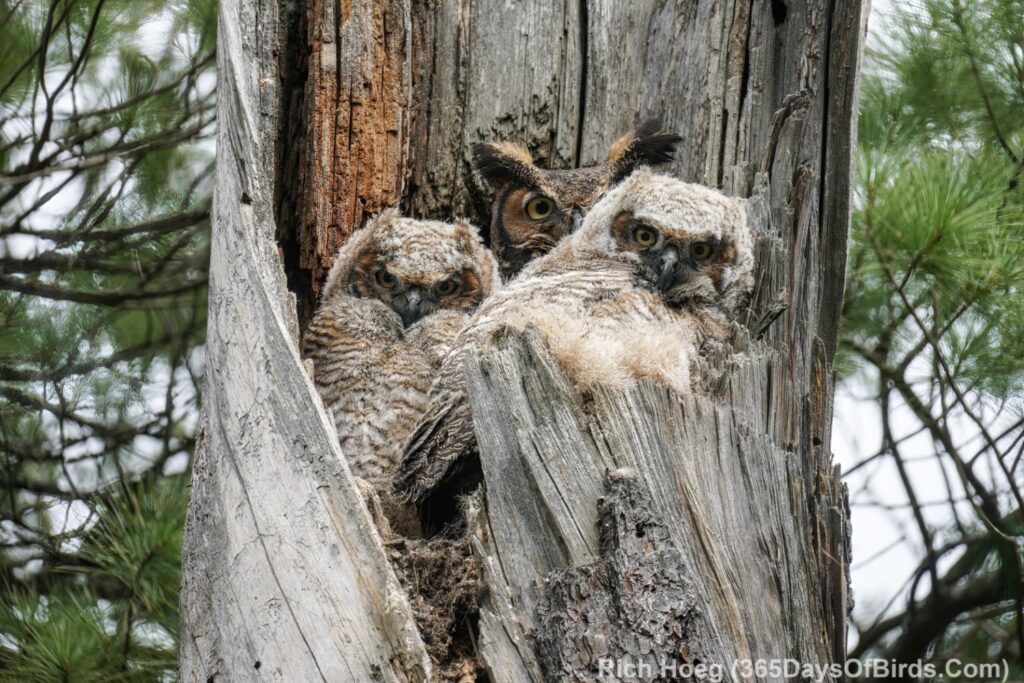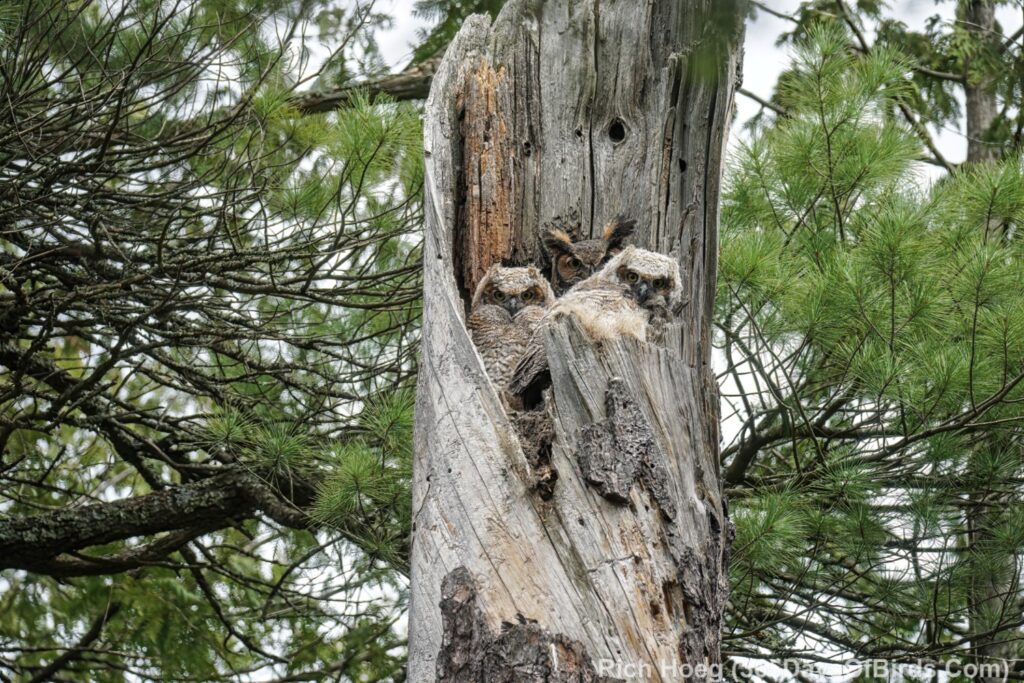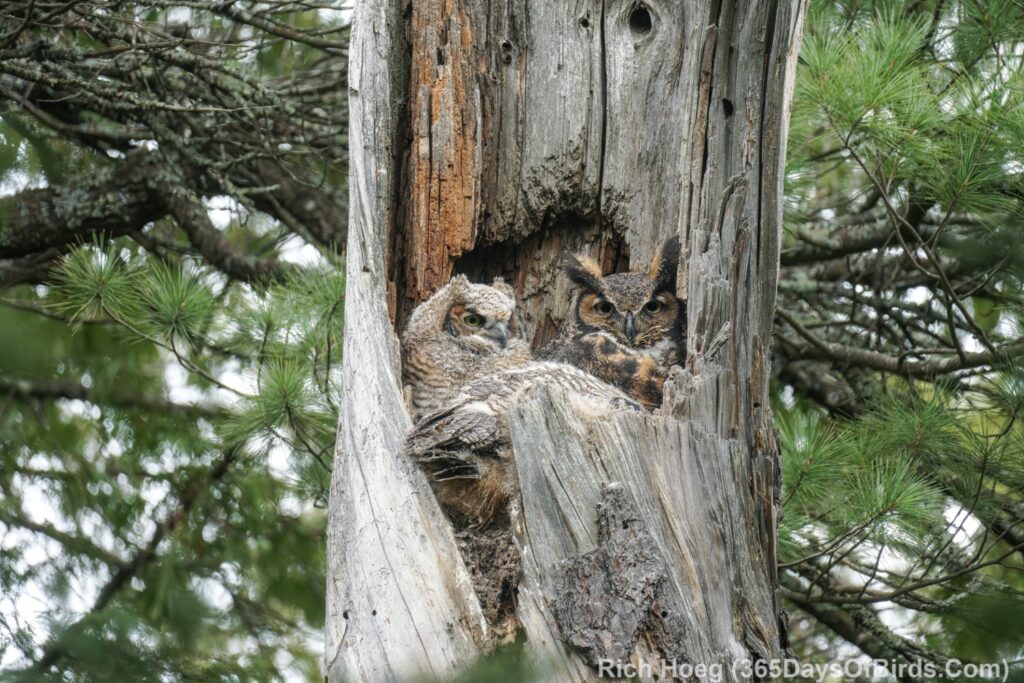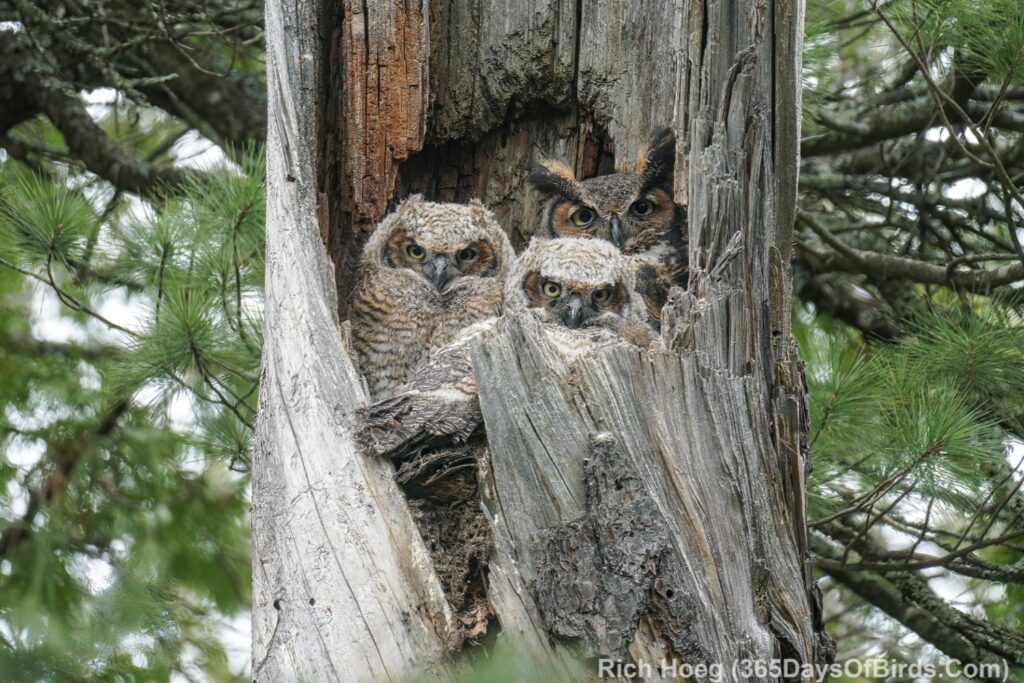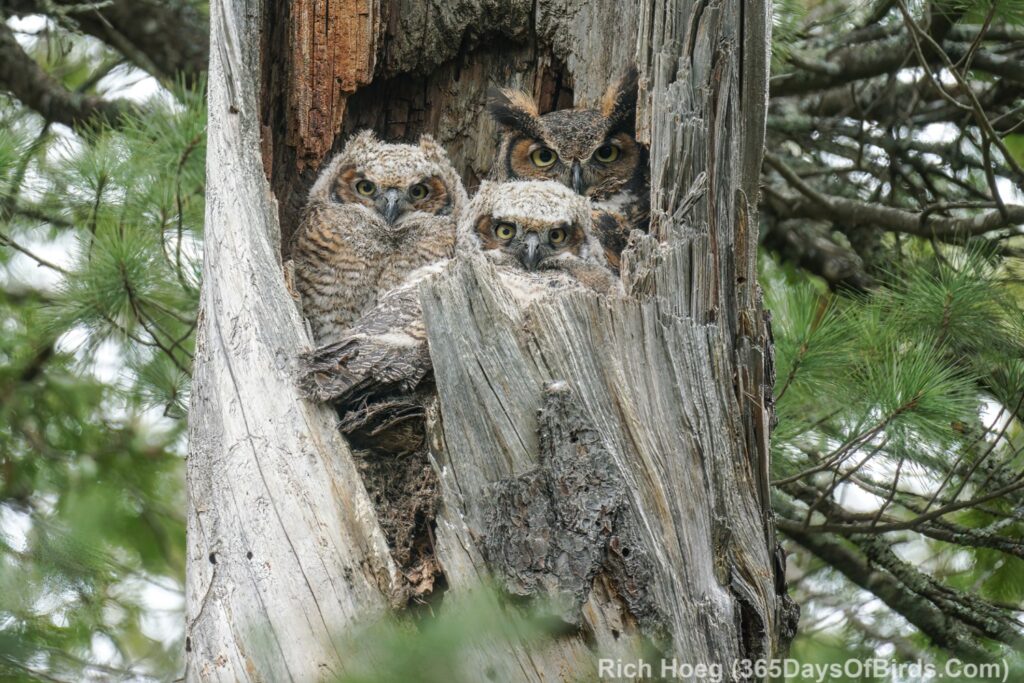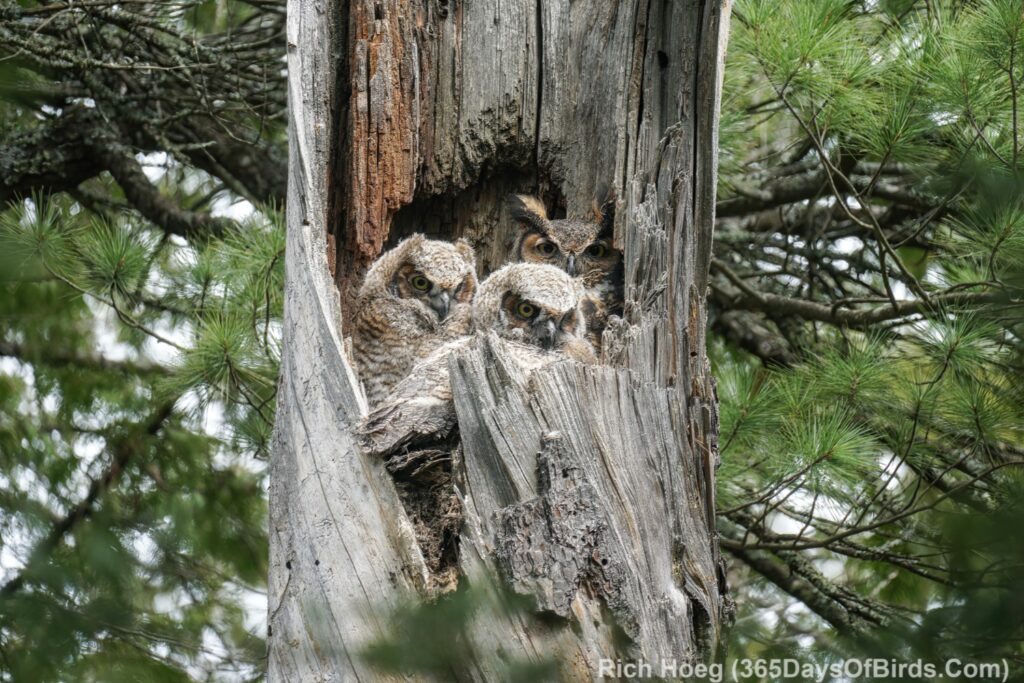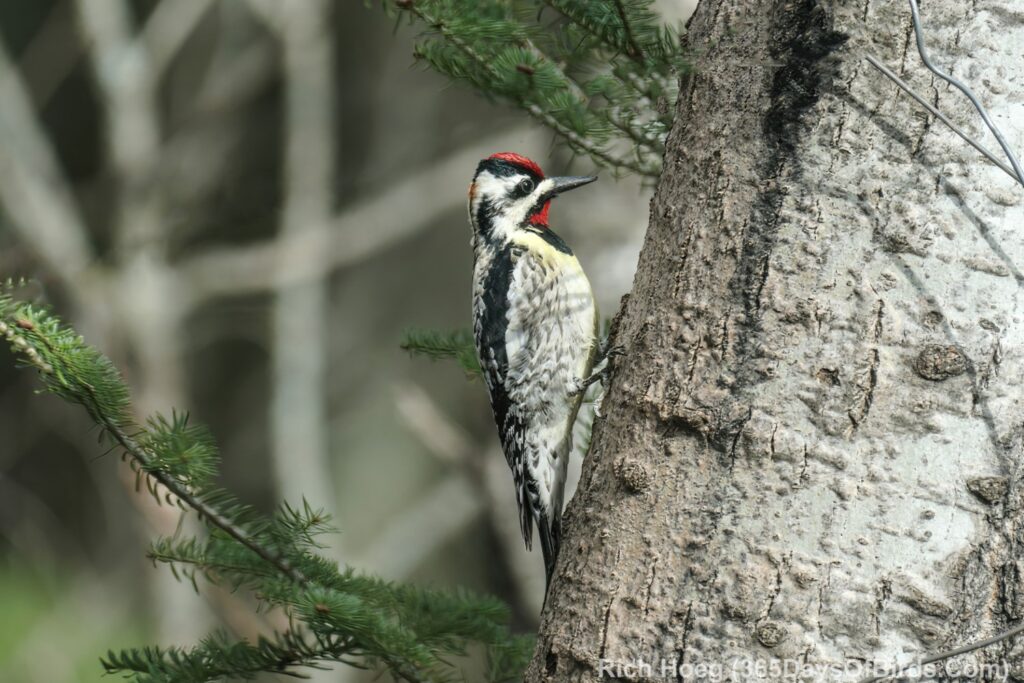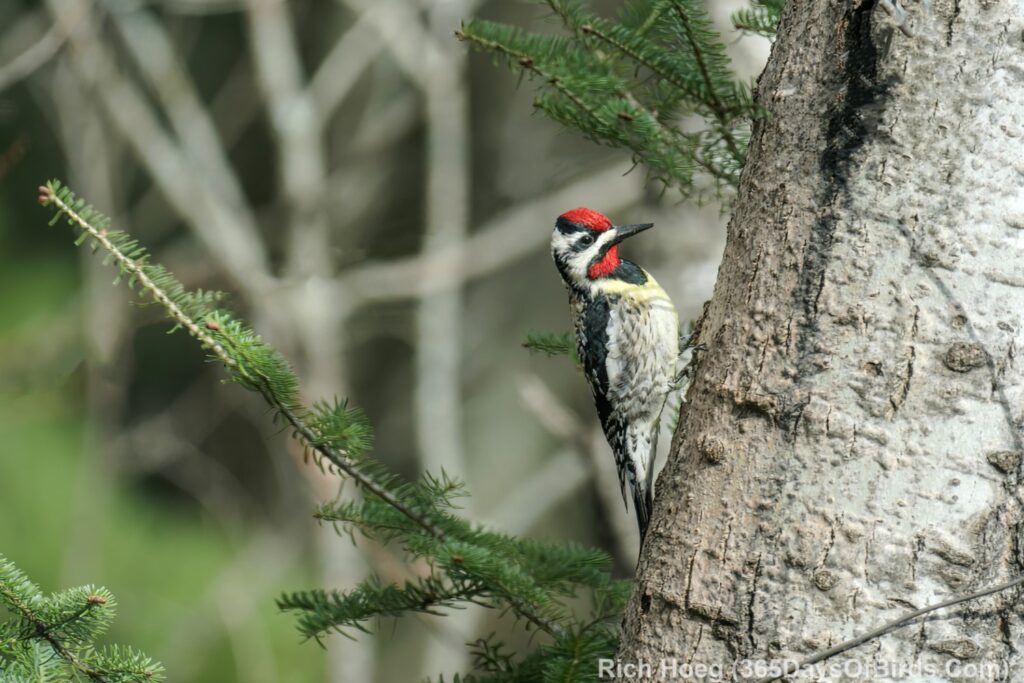Great Horned Owlets are known to “branch” at approximately 40 days of age, but what is an owlet supposed to do if one’s nest is only a cavity without branches? Trunk!!!
A few days ago when I hiked over to visit the owlets shortly after sunrise I discovered there was “trunking” go on! Enjoy!
Nesting Timeline from the Cornell School of Ornithology: (directly quoted)
Day 1: The chicks are unable to raise their heads and will lie limp for the first few days after hatching. At hatching the young are covered with white down, which is initially wet but dries quickly. Legs and skin are pink. They depend on their parents to bring them food and to feed them. Young show remnants of the yolk sac and retain the egg tooth for four to six days. Eyes stay closed for 9 to 11 days. The young crawl beneath their parent, grasp weakly, swallow, and gape on the first day.
Day 3: The young will start to raise their heads.
Day 6: The young will start snapping their bills.
Day 7: Young are able to cast their first pellets.
Day 9: Eyes may start to open.
Day 14: The owlets are able to locate the parents by sound. They will respond with food calls or whimpers when the adults hoot.
Day 15: The young will start to exhibit hostile behavior when intruders approach the nest. They may hiss, sway from side to side, snap their bills, and raise their wings.
Day 19: The young will start trying to focus on objects with exaggerated head movements.
Day 21: The young start to become more and more curious and begin to grasp objects in the nest and nibble them.
Day 20-27: The owlets are able to feed themselves, with food brought to the nest, although the female parent may continue to feed them.
Day 40: The young are able to climb well, at which time they may leave the nest and clamber out along a tree branch. This stage is known as branching.
Day 45-49: The young are fully feathered and capable of flight.
At seven weeks the owls are capable of three to four short flights of diminishing distance as they tire easily.
After leaving the nest, the fledglings stick together for several weeks. They often roost together in a tree in the immediate vicinity. Adults generally roost away from the young, who react to the sight of the adults with begging calls and flights towards the adults. Adults bring their young occasional food items, even into September, and deposit them, leaving the young to dismember and swallow the prey on their own.
Amity Great Horned Owlets …
35 Days Old (my best age guestimate of the oldest owlet)